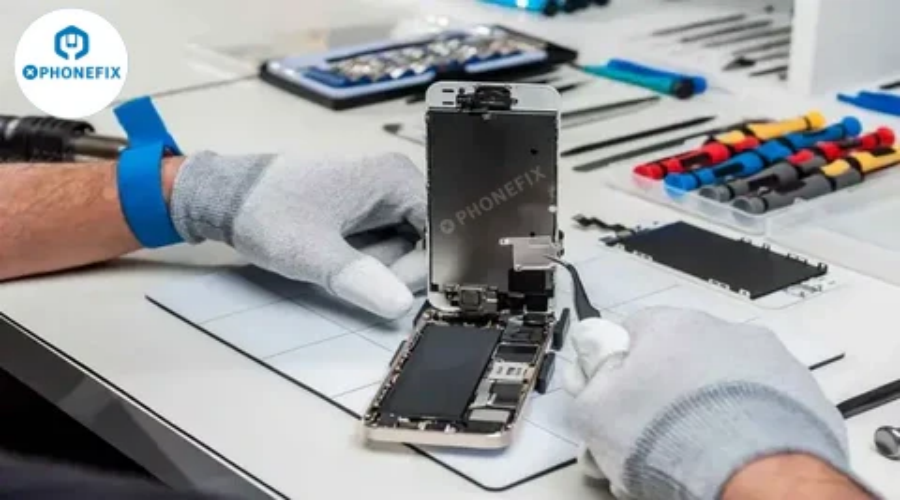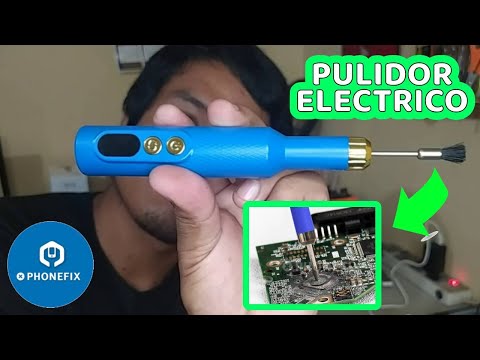With the rising popularity of smartphones, DIY phone repair has become an increasingly attractive option for many tech enthusiasts and professionals alike, having the right tools for phone repair is essential for success. In this article, Phonefix will go over the essential tools for phone repair, helping you build a complete phone repair kit to tackle common repairs efficiently and safely.
1. Opening Tools
Opening tools are the first step in any phone repair. These tools help you gently pry open the phone's shell without causing damage to internal components. The proper tools ensure that your phone's screen or back cover can be removed safely, minimizing the risk of breakage or scratches.

Plastic Spudger Metal Pry Bar: Plastic pry bars are ideal for safely separating components without damage due to their non-conductive nature, while metal pry bars offer a stronger option for tougher cases but should be used carefully to avoid harming the device.

Suction Cups: A must-have for phones with edge-to-edge displays or tightly adhered screens. Suction cups allow you to lift the screen safely without applying excessive force, which is particularly useful for newer devices with fragile screens.

2UUL 3D Screwdriver: Specialized for Apple devices, this screwdriver is essential for opening iPhones. Given the proprietary nature of Apple screws, using the correct screwdriver ensures smooth disassembly.

2. Diagnostic Tools
Proper diagnosis is the key to any successful repair. These tools help you identify the root cause of the issue, whether it's power-related, circuit-related, or a problem with a specific component like the battery.
Digital Multimeter: This versatile tool is used to test voltage, current, and resistance, helping you diagnose power-related issues. It is invaluable for checking battery health and identifying faulty circuits, which can save you time and unnecessary part replacements.

Logic Probe: A digital circuit tester used to ensure that signals are properly transmitted across the motherboard. It helps pinpoint issues in logic paths, which is essential for diagnosing board-level problems that are hard to detect visually.
Battery Tester: An essential tool for evaluating battery health, a common source of phone failure. As battery performance becomes increasingly important, accurate testing ensures that you're replacing faulty batteries rather than diagnosing other issues incorrectly.

3. Repair Tools
Once you've diagnosed the problem, it's time to repair or replace the faulty components. Having the right repair tools for phones makes the repair process easier, more efficient, and safer.
Precision Screwdriver Set: A high-quality set of precision screwdrivers is a must for any phone repair. These sets typically include various tips, such as flathead, Phillips, and Torx, allowing you to adapt to different phone models and sizes. A magnetic set ensures screws stay in place and prevents them from getting lost during disassembly.

Hot air gun: Heat is often required to soften adhesives that hold parts like screens or back covers in place. Hot air guns offer more temperature control, ideal for safely loosening adhesive on modern phones that use water-resistant seals.

Soldering Iron and Solder: For more complex repairs involving the motherboard or circuits, soldering iron is essential. Choose an iron with adjustable temperature settings for precise work. Make sure to use lead-free solder for a safer and more environmentally-friendly option.
4. Anti-Static Equipment
Static electricity can easily damage the sensitive components inside smartphones. Taking anti-static precautions is crucial to avoid costly mistakes.
Anti-Static Wrist Strap: This simple tool ensures that you don’t inadvertently discharge static electricity onto the phone’s motherboard or other components. By grounding yourself, you protect the device from electrical damage during repairs.

Anti-Static Mat: This mat provides a safe, static-free surface on which to work. It keeps your components grounded and reduces the likelihood of static damage during repair.

5. Testing and Reassembly Tools
After performing repairs, it’s essential to test the phone and ensure everything functions correctly before reassembling it.
Test Cables: Test cables can simulate the battery connection, allowing you to power the device during diagnostics or tests without fully reassembling it. This is particularly useful for troubleshooting intermittent issues or for ensuring the device works before reassembly.

Adhesives and Sealants: High-quality adhesives and sealants are necessary to reassemble the phone and ensure that all parts are securely in place. For modern phones, especially those with waterproof features, the right adhesive will restore the device's original sealing, maintaining its water resistance.
Conclusion
Having the right tools is the foundation of any successful DIY phone repair job. From precision screwdrivers and heat guns to anti-static equipment, each tool plays a vital role in the repair process. If you need Phone repair tools, phone repair parts, Hand tools or Power tools, China Phonefix is a good choice to get them. All of these tools and parts mentioned are available at China Phonefix Shop.












